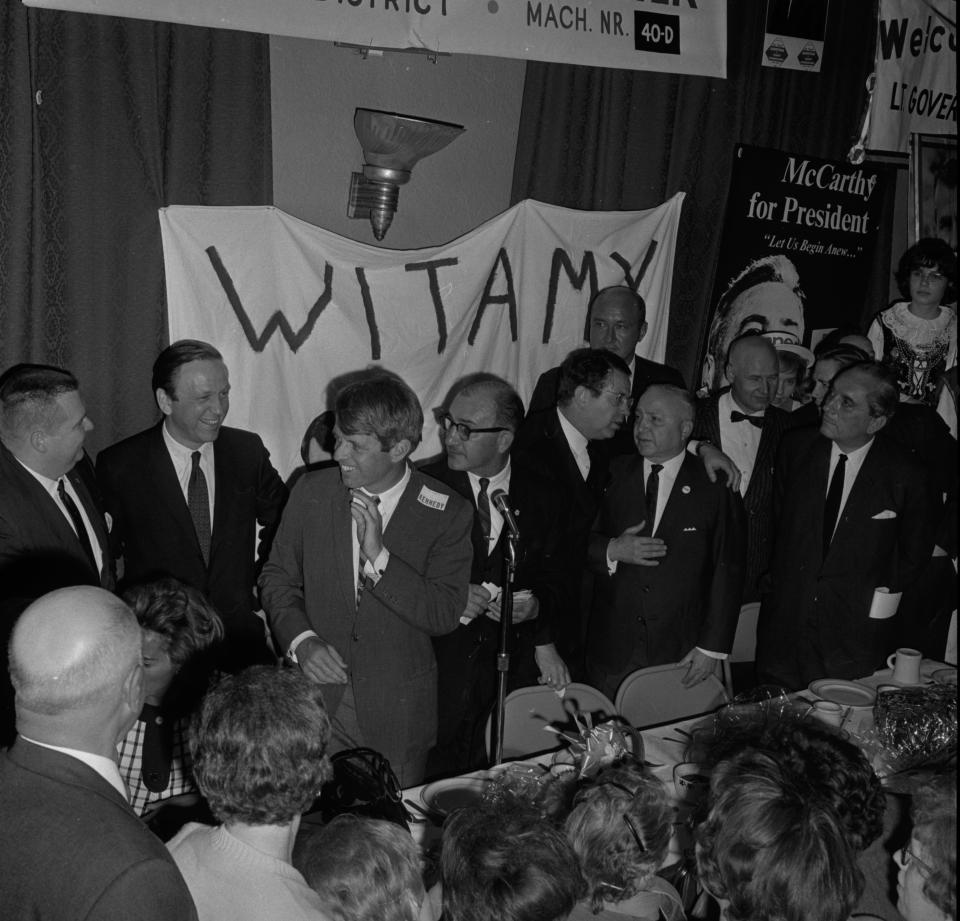Colwell: A Dyngus Day primer
Monday is Dyngus Day. Let’s try to explain it to someone who’s never gone Dyngusing, maybe a newcomer to the South Bend area who never even heard of such a thing.
Q. Does Dyngus Day always come on April 10?
A. No. It comes on April Fools’ Day next year. It’s always the Monday after Easter.
Q. Is it a religious observance?
A. No. But its roots go back to when Christianity was embraced by Poland in 966 with mass baptisms. Lots of water. Keep that in mind.
Q. So it’s a Polish observance?
A. Right. Traditions of Dyngus Day in the old country were continued in this country in some cities where there are many residents of Polish descent — like South Bend.
Photos: Dyngus Day fun is back in South Bend area
Q. What traditions?
A. Such things as using lots of water. Young men would douse young maidens with water, said to have been a throwback to the mass christenings, and switch the girls’ legs with branches of pussy willows, said to have been a form of flirting.
Q. Do they still do that here?
A. Young maidens now are safe. They weren’t back in the old days in the old country. Dousing got so dangerous, with young girls tossed into icy ponds, that the bishop of Poznan in 1420 issued a “Dingus Prohibetur,” forbidding such dangerous conduct.
Q. Did some of that stuff once go on here?
A. Yes. There was even a court precedent on dousing set by a judge in South Bend in 1918. A man was charged with assault and battery for dousing a young female who then became ill. The judge found the defendant not guilty because it was a custom to throw water on young women on Dyngus Day.
Q. How about switching legs with branches?
A. It once was a Dyngus tradition here. Not now. Young maidens now wouldn’t accept it as a suitable way of flirting. Nor would a court.
Q. How is Dyngus Day now celebrated in South Bend?
A. With kielbasa served at clubs, bars and restaurants. Folks of every descent join in the conviviality. Polka music and liquid refreshments add to the mood. And political campaigning by candidates for local, state and even national offices is a feature at some events.
Q. Polish sausage sounds appropriate. But how did political candidates get on the menu?
A. Dyngus Day comes shortly before the Indiana primary election. So, it was natural that candidates would campaign amid the Dyngusing throngs. Then the political part drew national attention in 1968 and has been featured more ever since.
Q. What was so significant in 1968?

A. Bobby Kennedy, campaigning in the Indiana presidential primary, drew record crowds of enthusiastic spectators for a downtown speech and all along the streets as he traveled to a packed West Side Democratic and Civic Club, then and now a center for Dyngusing. He won the primary, became a favorite for president and then was soon to meet tragedy in California.
Q. Does any other American city have a big Dyngus celebration?
A. Buffalo, N.Y., claims to be “the Dyngus capital of the world.” It has events for days, not just a day, and has a parade with floats, firetrucks and polka bands. A “Pussy Willow Pass,” for attending Dyngus events and riding the shuttle, costs $15. Smaller Dyngus gatherings are planned in Chicago and Pittsburgh. Dyngus enthusiasts moving from South Bend have started Dyngus events in places as far away as Alaska.
Q. Is Dyngus Day a Polish version of St. Patrick’s Day? And who was St. Dyngus?
A. Both observances, with ethnic roots, have their own food, music and customs. Each now is celebrated throughout a community. Being Irish in spirit on March 17 can be likened to being Polish at festivities on Monday. But there was no St. Dyngus.
Jack Colwell is a columnist for The Tribune. Write to him in care of The Tribune or by email at jcolwell@comcast.net.
This article originally appeared on South Bend Tribune: A primer on Dyngus Day, the day-after-Easter celebration

